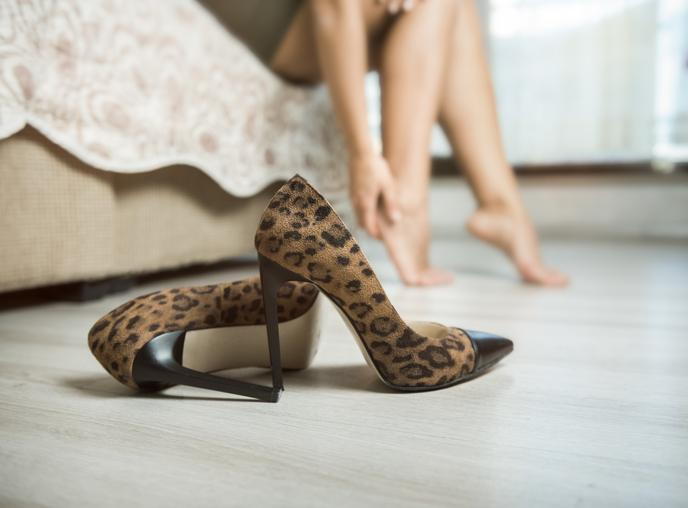High-Heels: The Cause of Most Women’s Foot Problems
posted: May 15, 2017.
For years, high heels have the stigma of being bad for the feet, but women are still drawn to them. If you are one of those who cannot, or wouldn’t, say ‘no’ to stylish but uncomfortable footwear, this article is for you.

You might think that this is a bit of an odd relationship between women and their feet. Many women spend a lot of time pampering their feet with lotions, foot soaks, and pedicures, among others. Though there are other issues that may be the factors, the kind of shoes that are worn are definitely related to foot problems experienced by women.
High Heels and the Dynamics of Human Walking
Researchers have found that high heels increase bone-on-bone forces in the knee joint significantly, explaining the higher incidence of osteoarthritis in the knee joint in women as compared with men.
In 2015, a published study in the Journal of Orthopedic Research also found that there are changes to knee kinetics and kinematics while walking in high heels that might contribute to increased risk of osteoarthritis in women. The risk also increased with extra weight and additional heel height. According to another study, the extra stress placed on the knees while wearing high heels also increases the risk of knee osteoarthritis and joint degeneration.
Other studies suggested that the use of high-heeled shoes might alter the natural position of the foot-ankle complex, and thereby, produces a chain reaction of effects (mostly negative) that travels up the lower limb and goes at least as far as the spine.
Generally, the higher the heels you are wearing, the more stress it places on your knee joints. However, even shoes today that have moderately high heels can still significantly increase knee torques that can contribute to the development and progression of knee osteoarthritis.
Foot Problems Related to High Heels
According to the American Osteopathic Association (AOA), high heels are not just one of the major factors leading to foot problems in women; one-third of wearers suffer from permanent problems because of long-term use. The extended wearing of high heels and continuous bending of toes into an unnatural position can cause a range of foot ailments, from ingrown toenails to irreversible damage to leg tendons. High heels have also been linked to injured or overworked leg muscles, plantar fasciitis, osteoarthritis of the knee and low back pain.
Healthier Ways to Wear High Heels
The general idea is: the less you wear high heels, the better. It does not matter if the heel is a wedge or a stiletto, both wide- and narrow-heeled shoes increase pressure on the knees in places where degenerative joint changes occur. If you do wear high heels, it is best to reserve them for occasions that do not involve extended periods of standing and walking.